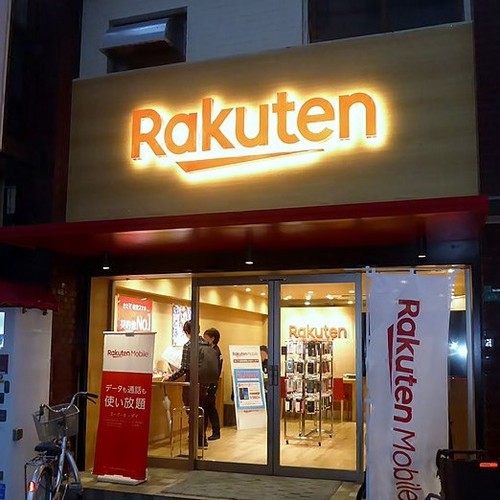
In the next 14 to 16 months, Japan's Rakuten will effectively junk the existing core network it has developed with Cisco and other providers as it "collapses" all network functions into the new 5G system it is building with NEC, a local technology firm.
The revelation emerged during Light Reading's 5G Networking Digital Symposium this week in response to a question fielded by Keith Dyer of The Mobile Network, which also covered the update here.
It came after event moderator Gabriel Brown, a principal analyst with the Heavy Reading analyst firm, said there was a "big question" for operators about running two cores in parallel or together in what is effectively a combined 4G and 5G core. "It all depends on where you are with the current network," he said.
Rakuten's decision, led by chief technology officer Tareq Amin, appears to reflect some dissatisfaction with the non-standalone 5G system the company is developing for the imminent launch of its 5G service.
Non-standalone (NSA) relies on the 4G core to support services on the 5G radio access network, while the standalone version of the technology brings a new 5G core in addition to the new radio.
Rakuten has developed a virtual evolved packet core (vEPC) and other functions with suppliers including US equipment giant Cisco but this week revealed that Japan's NEC, a company already unveiled as a 5G radio partner, will provide the 5G core.
Worth about $8 billion annually, the mobile core market today is dominated by Huawei, Ericsson, Nokia, ZTE and Cisco, which collectively serve more than three quarters of the entire market, according to data provided by Dell'Oro, a market-research firm.
But following a US-led backlash against Chinese vendors, and the emergence of several new contenders this year, the sector may be due for a shake-up.
"The 4G vEPC we have today will run with NSA to get us through the launch for 5G, but honestly speaking I don't think NSA is an exciting thing whatsoever," said Amin. "It just gets us out there with higher bandwidth and higher speed for the end user."
"This is not where we want to be," he explained. "When we launch our 5G core, for a period of time we will run them in parallel, but the strategy we take is that the 5G core, once built with all functions and components, will collapse all of the 4G functions. In 14 to 16 months, we are anticipating one single converged core, 100% pure cloud-native functions, on Rakuten."
The transition period will give Rakuten and NEC time to work on the development of a more highly scalable and higher-throughput user plane, the part of the network responsible for the transfer of user data. "We are spending time with NEC on the development of that feature," said Amin, describing this as the "most challenging thing in the cloud-native 5G core."
Want to know more about 5G? Check out our dedicated 5G content channel here on Light Reading.
Despite Rakuten's best efforts, the architecture is still not where Amin wants it to be, he told the symposium on Thursday. The virtual machines (VMs) Rakuten has been using to support about 198 virtual network functions have not brought the "elasticity" needed, said Amin.
His vision is a system based on more lightweight "containers," which would effectively break functions down into smaller, reconfigurable components. The plan is to run this container-based platform on Rakuten's own cloud, branded the Rakuten Communications Platform (RCP).
"We have pushed NEC to think differently," said Amin. "We have an open RAN architecture the world is embracing. We need also to push very hard toward the concept of an open core. Let us not be another vendor that is bringing a proprietary implementation. Let us look at this as an 'unvendor' implementation and an unorthodox way of how we partner.
"We will start with 5G standalone and eventually the architecture will converge all 4G elements into that 5G architecture to start the migration of everything we have done with VMs into the containers platform," he said.
Rakuten has become a huge litmus test for open RAN, an umbrella term for a radio access network based on new and more interoperable interfaces. Most of today's 4G networks use interfaces that tie operators into a single vendor's RAN system, a situation that Rakuten and others are trying to change.
The Japanese e-commerce giant also spies an opportunity to sell the RCP it has developed at home to service providers in other countries. "We have enough evidence now that going to global markets with our platform is an amazing opportunity to create a new market segment for global cloud," said Amin during a briefing in May.
The ambitious move could pit Rakuten against some of the world's biggest cloud companies, network product vendors and software specialists, including the likes of Nokia, Google and IBM.
As an alternative to more established vendors, NEC already appears to be attracting some attention outside Japan. This week the UK government was reported to be in discussions with the Japanese vendor about replacing Huawei in UK mobile networks. Seen as a security threat by officials in the US, the Chinese company could suffer as a result of new US trade sanctions restricting its access to vital components from Taiwan's TSMC.
Despite keen interest in Rakuten, skeptics question if it can seriously challenge Japan's existing operators with technologies that are largely unproven in a commercial setting.
Rakuten's 5G launch has also hit a speed bump. In May, the company said it had been forced to delay service rollout by three months, until September, due to government restrictions during the coronavirus pandemic.
"The COVID-19 impact is mainly on 5G network software testing and validation in areas where there are restrictions on movement," said a spokesperson for the company.
Related posts:
— Iain Morris, International Editor, Light Reading
Read more about:
AsiaAbout the Author(s)
You May Also Like











